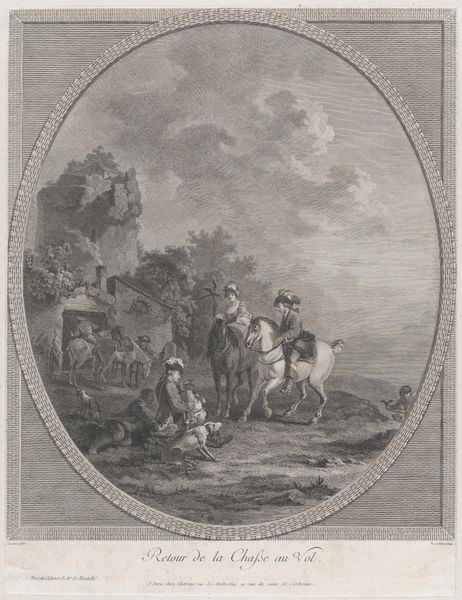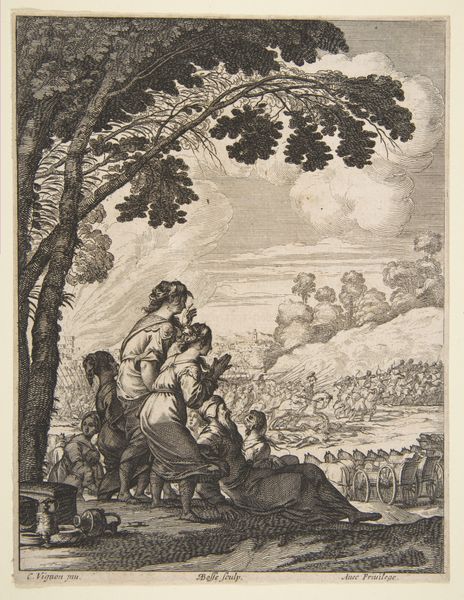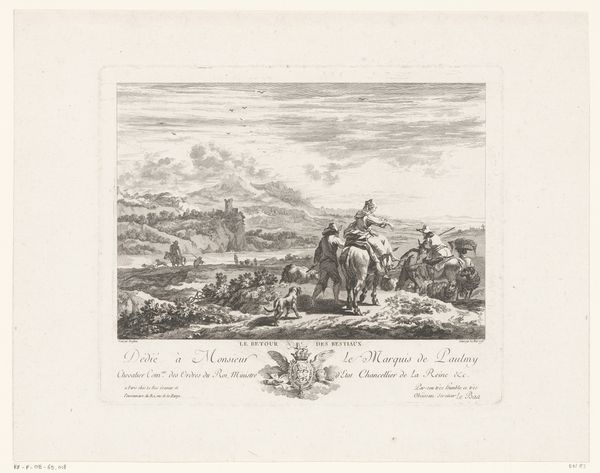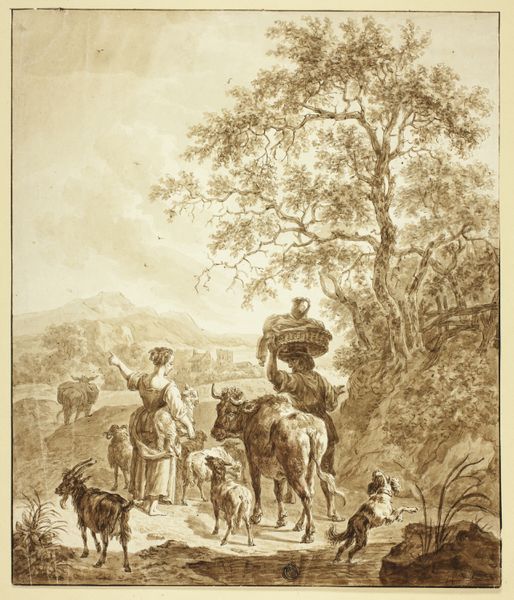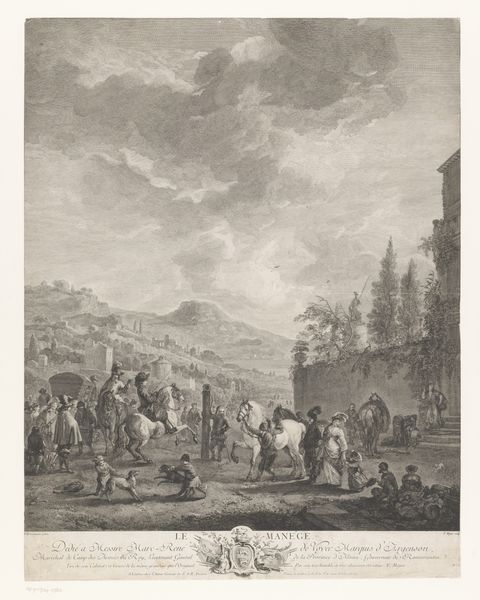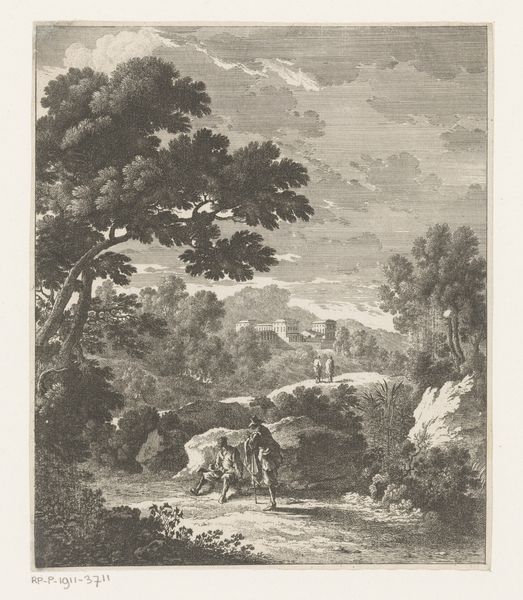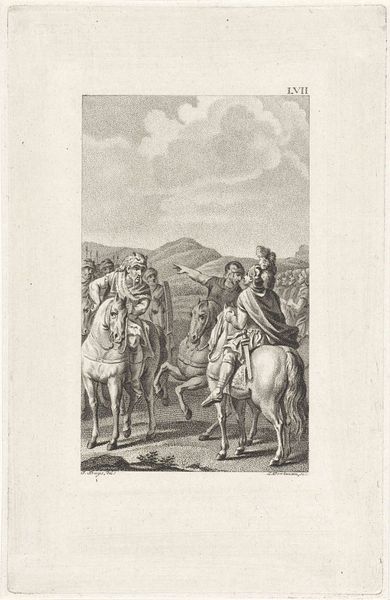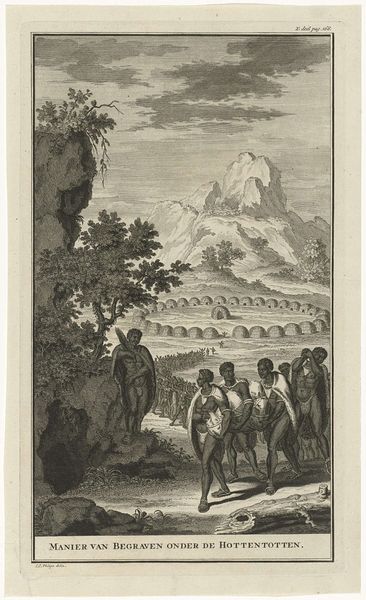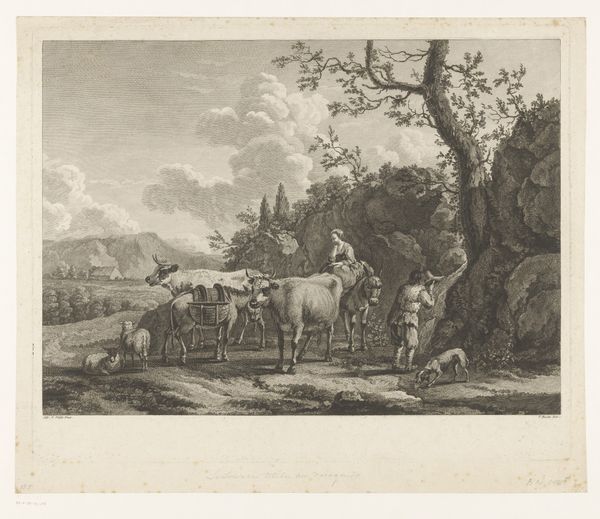
Dimensions: height 313 mm, width 264 mm
Copyright: Rijks Museum: Open Domain
Curator: This is Jacques Philippe Le Bas’s "Berglandschap met herders bij een waterplaats", which roughly translates to "Mountain Landscape with Shepherds at a Watering Place." It dates to around 1774. I find it to be quite enchanting! Editor: Enchanting is a perfect word. It has a quiet, contemplative quality. All that fine line work really captures the stillness of the scene, doesn’t it? I almost feel like I can hear the water trickling. Curator: It's an engraving, so the precision is part of its appeal, isn’t it? It really does evoke that very specific moment. There's this almost idyllic image of rural life... a gentle slowing-down from the big-city. Editor: That's interesting because to me, it romanticizes a harsh reality. There's such labor happening here, visible in every detail from the dress of the woman wading in the water, to the donkeys bearing who knows what. The peace we perceive might have been another's hard-won day. Curator: Yes, I can see that tension there. The work speaks to both things at once. But for me, what stands out is that dance of light and shadow—the way it creates depth and almost breathes life into the landscape. And how the eye moves up towards the mountains. Editor: Indeed. The mountain looming large behind feels like both a promise and a warning of nature's powerful hold. Do you notice how the people are scaled against it, nearly dwarfed in its immensity? A subtle comment, perhaps, on our place in the world. Curator: It certainly makes one think. So much packed into such a seemingly simple image. It's as if, beyond that very present, quotidian activity of people in the watering place, that majestic peak offers a broader historical perspective. Editor: Precisely, and that intersection of everyday existence with looming historical forces—be they natural or social—is why these genre scenes continue to hold so much weight and remain poignant mirrors to the contemporary. Curator: Absolutely. It makes me wonder who will interpret our everyday in centuries to come! Editor: Ah, food for thought! Thank you. I leave today with a new perspective on familiar sights and landscapes around me.
Comments
No comments
Be the first to comment and join the conversation on the ultimate creative platform.

